Related Research Articles
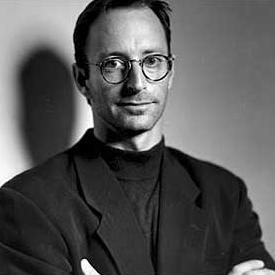
Herbert Ritts Jr. was an American fashion photographer and director known for his photographs of celebrities, models, and other cultural figures throughout the 1980s and 1990s. His work concentrated on black and white photography and portraits, often in the style of classical Greek sculpture, which emphasized the human shape.

Marc Riboud was a French photographer, best known for his extensive reports on the Far East: The Three Banners of China, Face of North Vietnam, Visions of China, and In China.
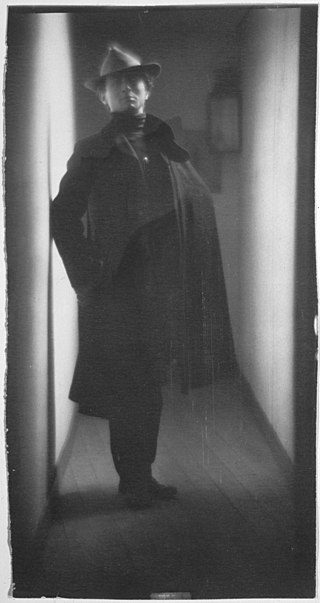
Edward Jean Steichen was a Luxembourgish American photographer, painter and curator and a pioneer of fashion photography. His gown images for the magazine Art et Décoration in 1911 were the first modern fashion photographs to be published. From 1923 to 1938, Steichen served as chief photographer for the Condé Nast magazines Vogue and Vanity Fair, while also working for many advertising agencies, including J. Walter Thompson. During these years, Steichen was regarded as the most popular and highest-paid photographer in the world.

The American Civil War was the most widely covered conflict of the 19th century. The images would provide posterity with a comprehensive visual record of the war and its leading figures, and make a powerful impression on the populace. Something not generally known by the public is the fact that roughly 70% of the war's documentary photography was captured by the twin lenses of a stereo camera. The American Civil War was the first war in history whose intimate reality would be brought home to the public, not only in newspaper depictions, album cards and cartes-de-visite, but in a popular new 3D format called a "stereograph," "stereocard" or "stereoview." Millions of these cards were produced and purchased by a public eager to experience the nature of warfare in a whole new way.

Philippe Halsman was an American portrait photographer. He was born in Riga in the part of the Russian Empire which later became Latvia, and died in New York City.

Richard Avedon was an American fashion and portrait photographer. He worked for Harper's Bazaar, Vogue and Elle specializing in capturing movement in still pictures of fashion, theater and dance. An obituary published in The New York Times said that "his fashion and portrait photographs helped define America's image of style, beauty and culture for the last half-century".

The carte de visite was a format of small photograph which was patented in Paris by photographer André Adolphe Eugène Disdéri in 1854, although first used by Louis Dodero.

David Hume Kennerly is an American photographer. He won the 1972 Pulitzer Prize for Feature Photography for his portfolio of photographs of the Vietnam War, Cambodia, East Pakistani refugees near Calcutta, and the Ali-Frazier fight in Madison Square Garden. He has photographed every American president since Lyndon B Johnson. He is the first presidential scholar at the University of Arizona.
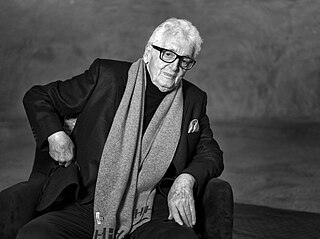
Harry James Benson CBE is a Scottish photographer. His photographs of celebrities have been published in magazines. He has published several books and won a number of prominent awards.
Grace Robertson was a British photographer who worked as a photojournalist, and published in Picture Post and Life. Her photographic series, including "Mother's Day Off" (1954) and "Childbirth" (1955), mainly recorded ordinary women in postwar Britain.

Gertrude Käsebier was an American photographer. She was known for her images of motherhood, her portraits of Native Americans, and her promotion of photography as a career for women.
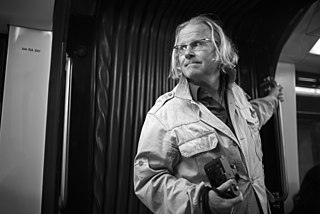
Peter N. Turnley is an American and French photographer known for documenting the human condition and current events. He is also a street photographer who has lived in and photographed Paris since 1978.

Anna-Lou Leibovitz is an American portrait photographer best known for her portraits, particularly of celebrities, which often feature subjects in intimate settings and poses. Leibovitz's Polaroid photo of John Lennon and Yoko Ono, taken five hours before Lennon's murder, is considered one of Rolling Stone magazine's most famous cover photographs. The Library of Congress declared her a Living Legend, and she is the first woman to have a feature exhibition at Washington's National Portrait Gallery.

Ernest Brooks was a British photographer, best known for his war photography from the First World War. He was the first official photographer to be appointed by the British military, and produced several thousand images between 1915 and 1918, more than a tenth of all British official photographs taken during the war. His work was often posed and formal, but several of his less conventional images are marked by a distinctive use of silhouette. Before and immediately after the war he worked as an official photographer to the Royal Family, but was dismissed from this appointment and stripped of his official honours in 1925, for reasons that were not officially made public.

Lawrence Fried was an American photo-journalist. He was born to first-generation Jewish Hungarian and Russian parents in New York, N. Y. Fried's work appeared in Newsweek, The Saturday Evening Post, The New York Times, Vogue, Collier's, and Parade Magazine.[1] with over 70 covers for Newsweek [2]. He was the recipient of the Photographer of the Year award by the Overseas Press Club, the Outstanding Service to ASMP award and the Benjamin Franklin Award [3].
Richard Corman is an American photographer, best known for his work as a portrait photographer. His subjects include musicians, actors, athletes, artists, writers and humanitarians. His 2013 book, Madonna NYC 83, is a collection of photos he took of a pre-fame Madonna in 1983.
Mark Abrahams is an American fashion and portrait photographer known for his raw, black-and-white celebrity portraits. His work has been featured in Bazaar, Glamour, GQ, The New York Times Magazine, V, Vanity Fair, and Vogue.
Godfrey Thurston Hopkins (16 April 1913 – 27 October 2014), known as Thurston Hopkins, was a British Picture Post photojournalist and a centenarian.
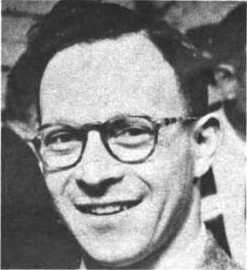
Arthur Lavine was an American mid-century photojournalist and magazine photographer who, among other achievements, produced significant documentation of New Caledonia during World War 2.
References
- 1 2 "Washington Post review". The Washington Post .
- ↑ "CSPAN Interview/Transcript".
- 1 2 3 "NYT Lens". October 29, 2012.
- ↑ "Communism(s): A Cold War History". Damiani.
- ↑ "Arthur Grace – about the author". December 3, 2015.
- 1 2 "Collections: Arthur Grace".
- ↑ "NPR transcript". NPR .
- ↑ "Deutsche Welle Review". Deutsche Welle .
- ↑ "America 101 by PhotoEye".
- ↑ "Vanity Fair review". Vanity Fair .
- ↑ "CBS News". CBS News .
- ↑ "NYJoB Review".
- ↑ "On and Off Stage With Robin Williams".
- ↑ "Communism(s): A Cold War Album". Damiani.
- ↑ "'You Will Stay Silent': Photographs From Behind the Iron Curtain". The New York Times. May 14, 2022.
- ↑ "A penetrating look behind the Iron Curtain". Washington Post. April 1, 2022.
- ↑ "Life Behind The Iron Curtain in Pictures". The Times of London. March 27, 2022.
- ↑ "George Carlin at National Portrait Gallery". National Portrait Gallery.
- ↑ "The Struggle for Justice". National Portrait Gallery.
- ↑ "Getty Collection".
- ↑ "Arthur Grace". The Daily Beast .
- ↑ "National Portrait Gallery".
- ↑ "International Center of Photography".
- ↑ "About the artist".
- ↑ "American History Collections".